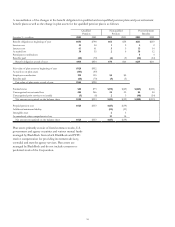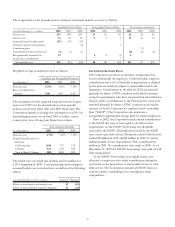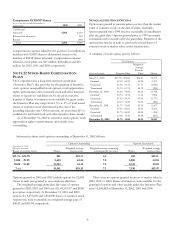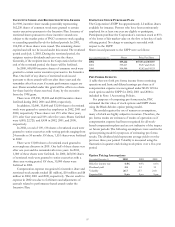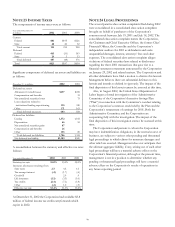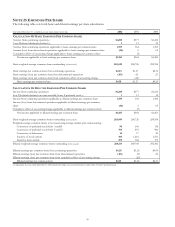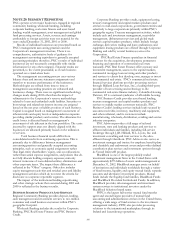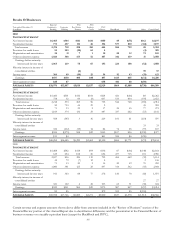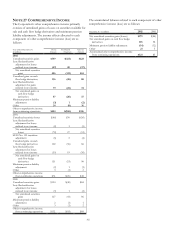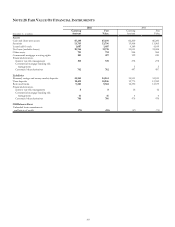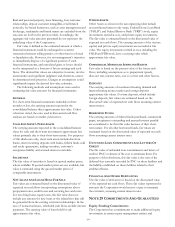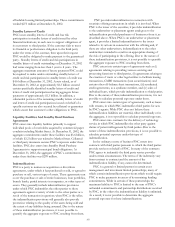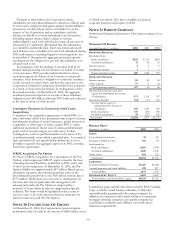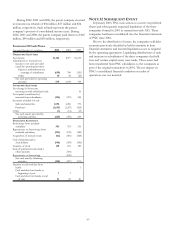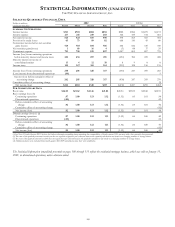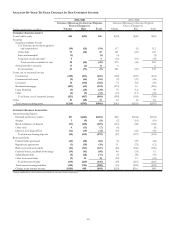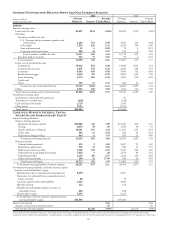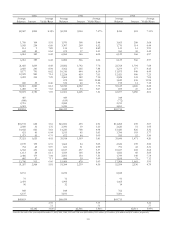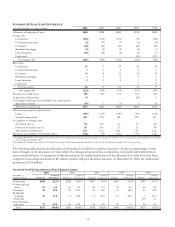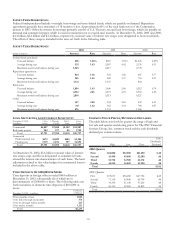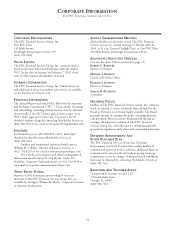PNC Bank 2002 Annual Report Download - page 106
Download and view the complete annual report
Please find page 106 of the 2002 PNC Bank annual report below. You can navigate through the pages in the report by either clicking on the pages listed below, or by using the keyword search tool below to find specific information within the annual report.104
Real and personal property, lease financing, loan customer
relationships, deposit customer intangibles, retail branch
networks, fee-based businesses, such as asset management and
brokerage, trademarks and brand names are excluded from the
amounts set forth in the previous table. Accordingly, the
aggregate fair value amounts presented do not represent the
underlying value of the Corporation.
Fair value is defined as the estimated amount at which a
financial instrument could be exchanged in a current
transaction between willing parties, or other than in a forced
or liquidation sale. However, it is not management’s intention
to immediately dispose of a significant portion of such
financial instruments, and unrealized gains or losses should
not be interpreted as a forecast of future earnings and cash
flows. The derived fair values are subjective in nature, involve
uncertainties and significant judgment and, therefore, cannot
be determined with precision. Changes in assumptions could
significantly impact the derived fair value estimates.
The following methods and assumptions were used in
estimating fair value amounts for financial instruments.
GENERAL
For short-term financial instruments realizable in three
months or less, the carrying amount reported in the
consolidated balance sheet approximates fair value. Unless
otherwise stated, the rates used in discounted cash flow
analyses are based on market yield curves.
CASH AND SHORT-TERM ASSETS
The carrying amounts reported in the consolidated balance
sheet for cash and short-term investments approximate fair
values primarily due to their short-term nature. For purposes
of this disclosure only, short-term assets include due from
banks, interest-earning deposits with banks, federal funds sold
and resale agreements, trading securities, customer’s
acceptance liability and accrued interest receivable.
SECURITIES
The fair value of securities is based on quoted market prices,
where available. If quoted market prices are not available, fair
value is estimated using the quoted market prices of
comparable instruments.
NET LOANS AND LOANS HELD FOR SALE
Fair values are estimated based on the discounted value of
expected net cash flows incorporating assumptions about
prepayment rates, credit losses and servicing fees and costs.
For revolving home equity loans, this fair value does not
include any amount for new loans or the related fees that will
be generated from the existing customer relationships. In the
case of nonaccrual loans, scheduled cash flows exclude interest
payments. The carrying value of loans held for sale
approximates fair value.
OTHER ASSETS
Other Assets as shown in the accompanying table include
noncertificated interest only strips, Federal Home Loan Bank
(“FHLB”) and Federal Reserve Bank (“FRB”) stock, equity
investments carried at cost, and private equity investments.
The fair value is estimated based on the discounted value of
expected net cash flows. The carrying amounts of the venture
capital, and private equity investments are recorded at fair
value. The equity investments carried at cost, including the
FHLB and FRB stock, have a carrying value which
approximate fair value.
COMMERCIAL MORTGAGE SERVICING RIGHTS
Fair value is based on the present value of the future cash
flows, including assumptions as to prepayment speeds,
discount rate, interest rates, cost to service and other factors.
DEPOSITS
The carrying amounts of noninterest-bearing demand and
interest-bearing money market and savings deposits
approximate fair values. For time deposits, which include
foreign deposits, fair values are estimated based on the
discounted value of expected net cash flows assuming current
interest rates.
BORROWED FUNDS
The carrying amounts of federal funds purchased, commercial
paper, acceptances outstanding and accrued interest payable
are considered to be their fair value because of their short-
term nature. For all other borrowed funds, fair values are
estimated based on the discounted value of expected net cash
flows assuming current interest rates.
UNFUNDED LOAN COMMITMENTS AND LETTERS OF
CREDIT
The fair value of unfunded loan commitments and letters of
credit is PNC’s estimate of the cost to terminate them. For
purposes of this disclosure, this fair value is the sum of the
deferred fees currently recorded by PNC on these facilities and
the liability established on these facilities related to their
creditworthiness.
FINANCIAL AND OTHER DERIVATIVES
The fair value of derivatives is based on the discounted value
of the expected net cash flows. These fair values represent the
amounts the Corporation would receive or pay to terminate
the contracts, assuming current interest rates.
NOTE 29 COMMITMENTS AND GUARANTEES
Equity Funding Commitments
The Corporation has commitments to make additional equity
investments in certain equity management entities and


